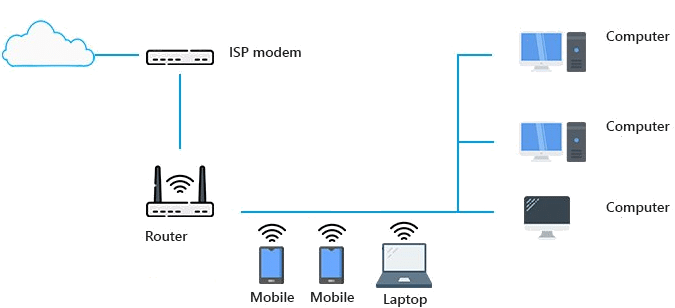Help Center
Print
VPN Router Setup
VPN Router Setup hardware requirements
There are many router manufacturers and models available out there. Many have similar specifications in terms of WiFi bandwidth and number of wired ports available. Even prices might also be very similar as well.
However, apart from these details which are, of course, very important that drive the decision of what device to buy, there are a few other key aspects that you need to look for, arguably more important.
In terms of hardware, routers are not that different from other devices like PCs, phones, laptops etc. In essence, all of them work based on the same main components: a CPU, RAM, storage space and network cards, among other components.
ShieldMe is pretty efficient in terms of memory/processing requirements, so a broad range of routers are supported. On the other hand, the most important characteristic to ensure minimal and/or optimal support is storage space.
This is also known as flash memory, internal flash or however the manufacturer/store describe it. In the end, it refers to the same thing, how much long-term storage space is available for the device (which means storage space that persists through device reboots or power cycles).
Packages and dependencies are needed for ShieldMe to function (PHP, OpenVPN, curl, etc). These require at least 5 MB storage space.
ShieldMe is pretty small – about 4 MB expanded after a clean installation (no configuration or usage cache).
Besides the above requirements, even more space is needed for data storage during usage (local server cache, configuration, history, logs, analytics etc) which can eat up to ~6 MB more space for an average usage.
For these reasons, the minimum requirement is to have at least 32 MB of flash/storage capacity on your device!
These requirements apply to both DD-WRT or OpenWrt firmware. Based on the available storage space, firmware releases come in various flavors to fit the available storage space on the device.
To find out how much flash/storage space your router model has or what version of DD-WRT your router supports, please use this search page.
For the same purpose you can check the OpenWrt equivalent search page.
Learn more about Router Firmware here.
Network Layout
Home networks usually consist of a gateway router/modem (the device from the internet service provider company) and client devices that connect to the internet through this device.
The home network setup is the local area network or LAN. Within the boundary of this network you have control over all aspects, while everything starting from the gateway router/modem is under the control of the ISP (internet service provider). The network infrastructure managed by the ISP is called WAN (wide area network).
Since WANs & LANs come in various shapes and sizes, this article covers the most basic scenario, comprised of:
- A WAN gateway: ISP modem/router
- A LAN router (your router device)
- Many LAN devices or clients (your PCs, laptops, phones, TVs, game consoles etc.
The image below is an example of such a home network layout:
Article Contents

